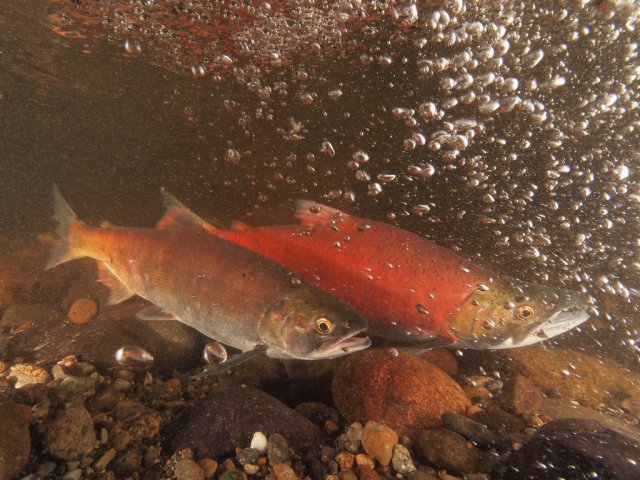Indicators: Dissolved Oxygen
What is dissolved oxygen?
Dissolved oxygen (DO) is the amount of oxygen that is present in water. Water bodies receive oxygen from the atmosphere and from aquatic plants. Running water, such as that of a swift moving stream, dissolves more oxygen than the still water of a pond or lake.
Why is it important to evaluate dissolved oxygen?
All aquatic animals need DO to breathe. Low levels of oxygen (hypoxia) or no oxygen levels (anoxia) can occur when excess organic materials, such as large algal blooms, are decomposed by microorganisms. During this decomposition process, DO in the water is consumed. Low oxygen levels often occur in the bottom of the water column and affect organisms that live in the sediments. In some water bodies, DO levels fluctuate periodically, seasonally and even as part of the natural daily ecology of the aquatic resource. As DO levels drop, some sensitive animals may move away, decline in health or even die.
What can dissolved oxygen tell us about the condition of water?
DO is considered an important measure of water quality as it is a direct indicator of an aquatic resource’s ability to support aquatic life. For the National Aquatic Resource Surveys (NARS), levels of DO are measured with a calibrated water quality probe meter, usually in conjunction with measurements for temperature and pH. While each organism has its own DO tolerance range, generally, DO levels less than 5mg/L are considered stressful for fish and levels less than 3mg/L are too low to support fish. DO levels below 1mg/L are considered hypoxic and usually devoid of life.
How is this indicator used in NARS?
Two surveys collect dissolved oxygen data and report results as an indicator. Data are available on the NARS data page. Below the table you access assessment information in current reports.
| NLA | NRSA | NCCA | NWCA | Indicator Type |
|---|---|---|---|---|
| X | X | Core Indicator | ||
| Research Indicator |
National Lakes Assessment Web Report- Dissolved Oxygen Results
National Coastal Condition Assessment Web Report- Coming soon

